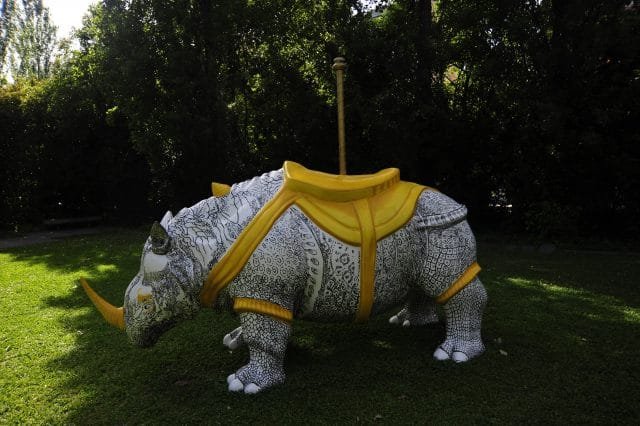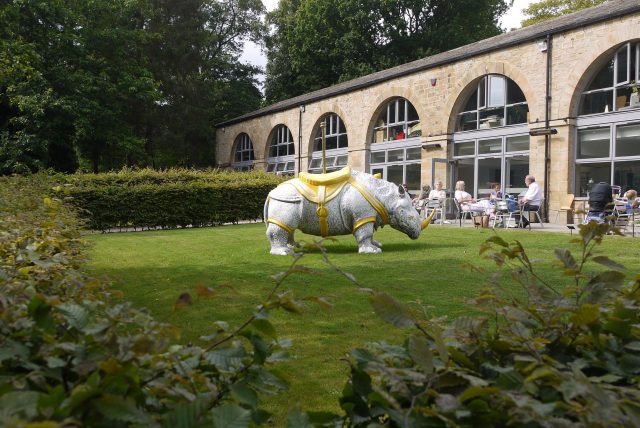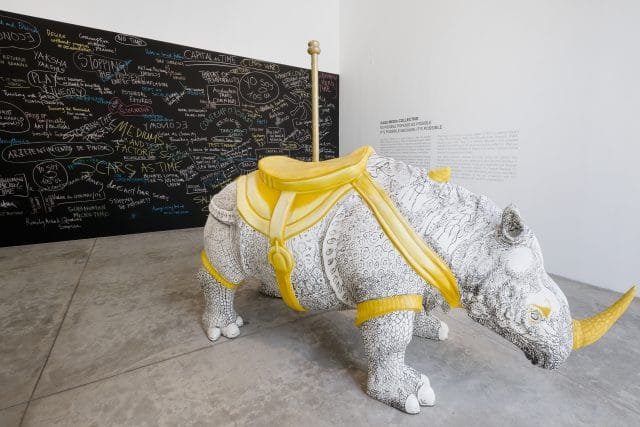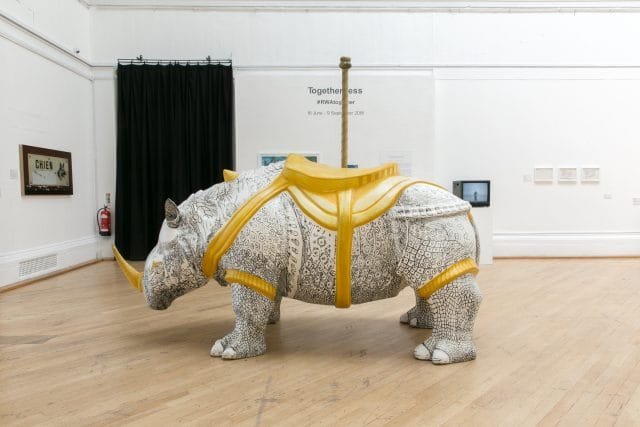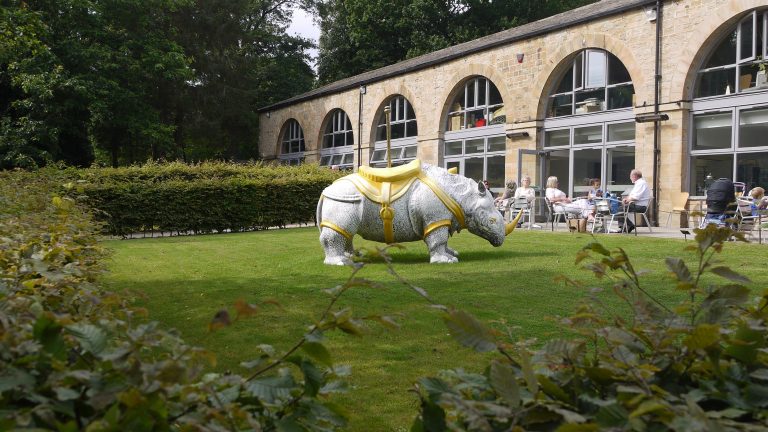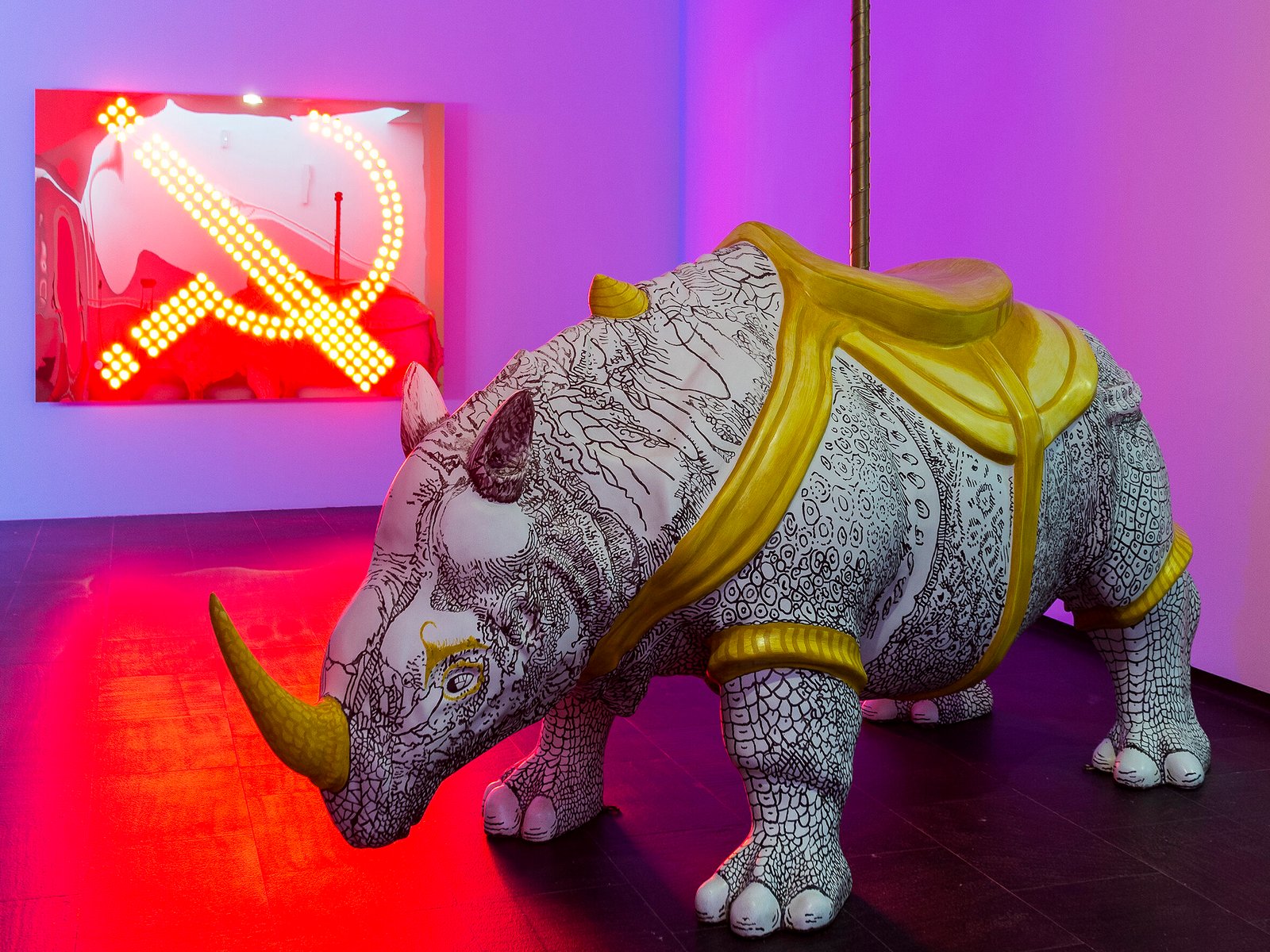
However Incongruous
Shown at: Gulbenkian Gardens, Lisbon (2007) | Yorkshire Sculptural Park, United Kingdom (2011) | Museo CA2M, Madrid (2014) | University Museum of Contemporary Art (MUAC), Mexico City (2015) | Royal West of England Academy, Bristol (2018)
Fibreglass sculpture
Length 10.5 feet, Height 5.25 feet, Girth 3 feet
A life-size replica of a one-horned rhinoceros stands poised, balancing curiosity with confrontation. This enigmatic rhinoceros is conjured from the imagination of Albert Durer, who envisioned the creature based on reports and rumours. He immortalized this creature named Gainda, sometime in 1515 in his woodcut, “Rhinoceros.” Raqs, following the beast’s form from Durer’s woodcut, and turned it into an animal on a carousel. A beast that transports as much as it entertains.
Lisbon, once the vibrant heart of the Portuguese maritime empire, served as a hub for the exchange and display of exotic creatures. It was here, amid bustling gardens and trade, that tales of Gainda first emerged—a gift intended by King Manuel I for Pope Leo X, conceived as a diplomatic overture in an era of global rivalries. En route from Lisbon to Rome, the ship carrying the rhinoceros, (already celebrated, as a wonder of its age, because, like a unicorn, it had one horn) sank in the waters of the Mediterranean. Centuries passed before another rhinoceros, another living unicorn, was seen in Europe. Imaginative renditions of the animal have since taken on lives of their own.
In a space as charged as a fairground, where images and memories linger long after their origins fade, the reappearance of Gainda in the Gulbenkian Gardens evokes a quiet haunting. Here, the rhinoceros serves as a steadfast vehicle to realms both lost and imagined—a unicorned gatekeeper of fantasies, inviting viewers on a leisurely stroll that unfolds into a secret adventure, much like a recurring dream.
